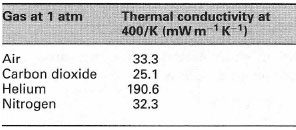Thermal analysis
Thermal methods are techniques in which changes in physical and/or
chemical properties of a substance are measured as a function of
temperature. Several methods of analysis are used:
- Thermogravimetry (TG) is a technique in which a change in the weight of
the substance under investigation is monitored with respect to
temperature or time.
- Differential thermal analysis (DTA) is a technique for measuring the
difference in temperature between the substance under investigation and
an inert reference material with respect to temperature or time.
- Differential scanning colorimetry (DSC) is a technique in which the
energy necessary to establish a zero temperature difference between the
substance under investigation and a reference material is monitored with
respect to temperature or time.
When carrying out a thermal analysis procedure it is important to consider
and record the following details:
- Sample: a chemical description of the sample, plus its source and any pretreatment.
Also, the purity, chemical composition and formula, if known.
Other important items to note are: the particle size, whether the sample
has been mixed with a 'binder' (and, if so, what it has been mixed with
and in what ratio) and the 'history' of the sample.
- Crucible: the material and design of the sample holder is important.
Obviously it is important that the crucible does not react with the sample
during heating. In addition, the geometry of the crucible can influence the
gas flow.
- Rate of heating: this is very important if you intend to repeat the
experiment on a subsequent occasion. Obviously the rate of heating of
the sample in the crucible is not instantaneous but depends upon
conduction, convection and radiation within the system. Thermal lag is
therefore likely to be observed.
- Atmosphere: The nature of the atmosphere surrounding the sample is
important in relation to the transfer of heat and the chemistry of the
sample reaction. Common sample atmospheres are shown in Table 36.1.
In addition, the flow rate of the gas is important: a static system will not
remove reaction products from the sample.
- Mass of sample: obviously the amount of sample will have an effect on
the heating rate. Also, sample homogeneity may be an issue with very
small samples.
 |
| Table 36.1 Common sample atmospheres |





